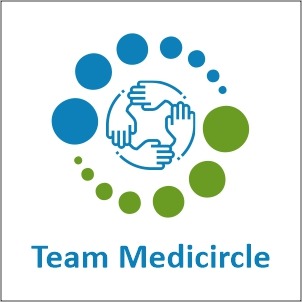The salt (sodium) content of processed meat and fish products is so high in the US that it ranks second in the world, finds a 5-country study published in the online journal BMJ Open.
China comes first, while the UK comes last in the overall rankings. But salt levels within and between the countries studied varied widely, depending on the product and brand, the findings show.
High dietary salt intake is a major cause of high blood pressure and the associated risks of cardiovascular and kidney diseases and death. The World Health Organization (WHO) recommends a maximum salt intake of 2000 mg/day. But the average global salt intake in 2010 was around twice that.
The WHO has set a target of a 30% global reduction in salt intake by 2025, and to gauge progress against this, focused on the salt content of processed meat and fish products in three developed and two developing countries: the UK; USA; Australia; China; and South Africa.
The 2017 UK salt reduction targets were used to assess the percentage of products reaching the levels across the five countries.
The five nations included in this study each have their own strategies to reduce dietary salt intake and are part of The International Network for Food and Obesity/non-communicable diseases Research, Monitoring and Action Support (INFORMAS), which aims to collate and track the nutritional content of processed foods worldwide.
Products for the study were sourced from major supermarket chains in the five countries, and the food nutrition labels were scanned to assess the salt (sodium) content (mg/100 g).
In reference to the ‘traffic light’ system adopted by the UK, salt (sodium) level was defined as low if under 120 mg/100g; medium if between 120 and 599 mg/100g; and high if above 600 mg/100 g.
Processed meat products were classified as meat alternatives; bacon; canned meat; frozen meat; meat burgers; salami and cured meats; sausages and hot dogs; sliced meat; dried meat; pate and meat spreads; kebabs; ‘other’ meat products; raw flavoured meats; whole hams and similar products; roast chicken; and raw unflavoured meats.
Processed fish products were categorised as canned; chilled; frozen, and ‘other’.
A total of 33,955 processed meat and fish product labels were scanned, of which 7455 (22%) were excluded because of missing or duplicate information, leaving 26,500 (78%) products for analysis. The total number ranged from 885 for the UK to 17,098 for the USA.
Overall, China had the highest salt level (1050 mg/100 g) for all products, ranking it the country with the saltiest products for both meat (1066 mg/100 g) and fish products (942 mg/100 g), followed by the USA, South Africa, Australia and the UK (432 mg/100 g).
But the average salt content of meat products was lower in Australia (580 mg/100 g) than it was in the UK (590 mg/100 g). And significant variations in salt content were evident among all the subcategories and between countries.
For example, the salt content of roast chicken in China was 4.5 times that of the same product in the UK (893 mg/100 g vs 197 mg/100 g); chilled fish in China was 4.5 times saltier than that of the USA (1744 mg/100 g vs 389 mg/100 g).
And the salt content of pâté and meat spreads in China was around 4 times that of Australia (1916 mg/100 g vs 480 mg/100 g). Yet the salt content of bacon, frozen meat, salami and cured meats, dried meat and frozen fish in China was the lowest of all the five countries.
A substantial proportion of processed meat and fish products fell into the red and amber traffic light categories, with the highest proportion of green light products found in the UK, accounting for just over 12.5% of all meat and fish products.
But the overall sodium content of meat and fish products in each country was high, with only 10% of the products in the UK and USA, and no more than 5% in China and South Africa, falling into the green light category.
The UK had the highest percentage of products achieving its own 2017 salt reduction targets, with the exception of bacon products: just 14% reached this target. This compares with 28% in the USA, 50% in Australia, 75% in South Africa, and 85% in China.
Based on these findings, if eating 100 g meat and fish products daily, average sodium intake would account for just over 47% of the WHO recommended daily maximum in China and the USA, 37% in South Africa, nearly 35% in Australia, and 27% in the UK.
“It is not easy to simply replace or reformulate the high sodium products that already exist for years. However, the large difference in sodium content of similar products in different countries, and the difference in sodium content among different brands within the same country, indicate that there is still a lot of room for salt reduction,” comment the researchers.
They acknowledge several limitations to their findings, including that these are based on purchases from selected outlets at one point in time. What’s more, they didn’t capture food purchasing data to quantify actual sodium consumption of processed meat and fish products.
Third, data collection spanned several years, from 2012 to 2018, during which time product reformulation may have occurred, they suggest.
Nevertheless, they conclude: “The sodium content of meat and fish products in all the selected countries was very high, with a 100 g serving size of meat and fish products contributing to one half/ third of WHO recommended maximum daily sodium intake.”

 China ranked first; UK last: but wide variations, depending on the product, finds 5-country study
China ranked first; UK last: but wide variations, depending on the product, finds 5-country study





















.jpeg)








.jpg)



.jpg)




